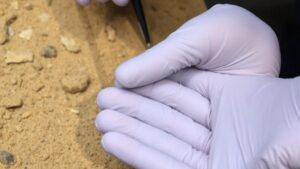Spotting Ancient Burial Cairns in Isolated Mountain Ridges
Spotting Ancient Burial Cairns in Isolated Mountain Ridges
Burial cairns are an integral part of archaeological studies, particularly in the context of ancient funerary practices. These structures, primarily composed of stones, serve as significant indicators of past human activity and belief systems. This article elucidates the techniques for spotting ancient burial cairns in isolated mountain ridges, offering a comprehensive understanding that incorporates archaeological methodologies, environmental considerations, and cultural implications.
Understanding Burial Cairns
Burial cairns date back thousands of years and vary significantly in size, shape, and construction style. Generally, these mounds were constructed using local stone, creating a significant landmark in the landscape. Their primary function was to mark burial sites, often related to specific cultural practices. For example, in the British Isles, a typical burial cairn might house an individual or multiple interments, sometimes accompanied by grave goods.
The features of burial cairns can include:
- Size and structure, indicating the importance of the buried individual
- Orientation and placement concerning natural landmarks or celestial bodies
- Material used, which can reveal the technological capabilities of the society
Methodologies for Spotting Cairns
Spotting ancient burial cairns requires a systematic approach that incorporates both fieldwork and remote sensing techniques. Here are key methodologies employed by geologists and archaeologists:
Field Surveys
Field surveys are the most traditional and direct method of locating burial cairns. This involves:
- Visual inspections of the landscape, particularly in areas known for ancient habitation.
- Mapping potential sites using GPS technology, which helps in systematically exploring remote ridges.
For example, a study conducted in the Scottish Highlands involved extensive hiking and visual mapping of known burial sites. Researchers were able to identify previously unrecorded cairns by examining landforms and vegetation disturbances.
Remote Sensing Techniques
Modern technology has revolutionized the methods used to locate burial cairns. Techniques such as LiDAR (Light Detection and Ranging) have become increasingly utilized, as they allow researchers to visualize the ground surface beneath dense forest canopies. LiDAR can create high-resolution topographical maps, which show subtle alterations in the landscape indicative of human construction.
In a notable case study in Norway, LiDAR was used to reveal multiple ancient burial mounds previously obscured by vegetation, providing evidence of a more extensive burial complex in the region than was initially believed.
Environmental Considerations
Environmental factors play a critical role in the preservation and visibility of burial cairns. The geological composition and landscape dynamics can impact the longevity and discoverability of these ancient structures:
- Soil Erosion: In areas of high erosion, cairns may be partially or completely washed away. Sites that have fared well are often on rocky or less disturbed slopes.
- Vegetation Growth: Dense growth can obscure burial cairns, making remote sensing techniques crucial in such regions.
This interplay between environment and archaeology is effectively demonstrated in the Appalachian Mountains of the United States, where fluctuations in climate and vegetation have significantly influenced preservation conditions for cairns.
Cultural Context and Significance
Understanding the cultural significance of burial cairns enriches the interpretation of archaeological data. Each cairn is a testament to the beliefs, social hierarchies, and practices of ancient societies. For example, in the Nordic regions, cairns were often constructed to honor warriors, showcasing their valor and importance in the community.
By studying the artifacts found within and around burial cairns, such as pottery or tools, archaeologists glean insights into the daily lives and rituals of these communities. distribution of these cairns over isolated mountain ridges can also indicate ancient trade routes or migration patterns, pointing toward the interconnectedness of different cultures.
Conclusion and Actionable Takeaways
Spotting ancient burial cairns requires a multifaceted approach involving traditional and modern techniques, as well as an appreciation of the cultural and environmental contexts. As archaeological methods continue to advance, our understanding of these significant structures will only deepen. So, aspiring archaeologists and scholars are encouraged to:
- Engage with both field and remote-sensing methodologies to develop a comprehensive skill set.
- Foster interdisciplinary collaborations, drawing insights from geology, anthropology, and history.
- Consider the impact of modern technological advancements on traditional archaeological practices.
Through these strategies, one can contribute to the ongoing exploration and preservation of our ancient past.

